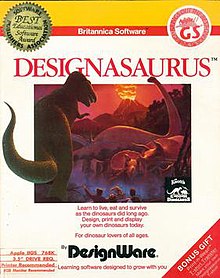
Deluxe Paint, often referred to as DPaint, is a bitmap graphics editor created by Dan Silva for Electronic Arts and published for the then-new Amiga 1000 in November 1985. A series of updated versions followed, some of which were ported to other platforms. An MS-DOS release with support for the 256 color VGA standard became popular for creating pixel graphics in video games in the 1990s.

Fantavision is an animation program by Scott Anderson for the Apple II and published by Broderbund in 1985. Versions were released for the Apple IIGS (1987), Amiga (1988), and MS-DOS (1988).

Cinemaware was a video game developer and publisher. It had released several titles in the 1980s based on various film themes. The company was resurrected in 2000, before being acquired by eGames in 2005.
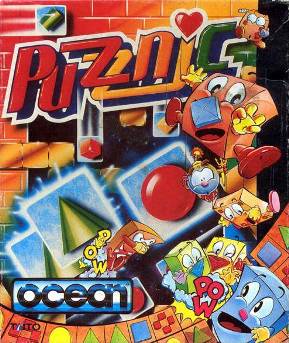
Puzznic is a tile-matching video game developed and released by Taito for arcades in 1989. It was ported to the Nintendo Entertainment System, Game Boy, PC Engine, X68000, Amiga, Atari ST, Amstrad CPC, Commodore 64, MS-DOS, and ZX Spectrum between 1990 and 1991. Home computer ports were handled by Ocean Software; the 2003 PlayStation port was handled by Altron. The arcade and FM Towns versions had adult content, showing a naked woman at the end of the level; this was removed in the international arcade release and other home ports. A completed Apple IIGS version was cancelled after Taito America shut down.

Tynesoft Computer Software was a software developer and publisher in the 1980s and early 1990s.
Links is a series of golf simulation video games, first developed by Access Software, and then later by Microsoft after it acquired Access Software in 1999. Microsoft also produced its own series of golf games based on Links, under the title Microsoft Golf. The Links series was a flagship brand for Access, and was continued from 1990 to 2003. The first game in the series, Links: The Challenge of Golf, won Computer Gaming World's 1991 Action Game of the Year award.
MicroIllusions was a computer game developer and publisher of the home computer era. Based in Granada Hills, California, the company was a strong supporter of the Amiga and typically released titles on that platform before porting it to others.

Eutechnyx Limited is a British video game developer based in Newcastle upon Tyne, England. Since 1997, the company has focused on racing games. They are known for their largely panned video game Ride to Hell: Retribution, work with the NASCAR The Game franchise, and as a developer on various other racing titles and games.
Manley & Associates was an independent software developer, founded in 1982, which developed or ported over 70 video games, multimedia, and educational entertainment titles which were published by other companies, including Electronic Arts, Activision, Disney, GameTek, Publishing International, and Spectrum HoloByte. Many of the company's early games were one or two person projects created in founder Ivan Manley's house, but eventually it grew to roughly 60 people working from an office park in Issaquah, Washington.

Following the introduction of the IBM Personal Computer, or IBM PC, many other personal computer architectures became extinct within just a few years. It led to a wave of IBM PC compatible systems being released.

Fun School is a series of educational packages developed and published in the United Kingdom by Europress Software, initially as Database Educational Software. The original Fun School titles were sold mostly by mail order via off-the-page adverts in the magazines owned by Database Publications. A decision was made to create a new set of programs, call the range Fun School 2, and package them more professionally so they could be sold in computer stores around the UK. Every game comes as a set of three versions, each version set to cater for a specific age range.
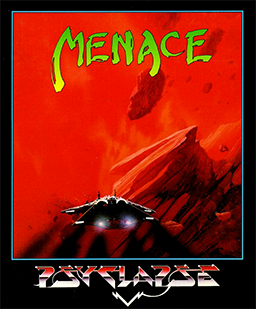
Menace is a horizontally scrolling shooter developed by DMA Design and published by Psygnosis. It was released for the Amiga and Atari ST in 1988, and for the Commodore 64 and MS-DOS in 1989. The game is set on the planet of Draconia, where players are tasked with destroying the planet's defence mechanisms in order to kill the harmful creatures.

Harrier Combat Simulator is a combat flight simulation game published in 1987 by Mindscape for the Commodore 64. Ports for Amiga, Atari ST and IBM PC followed in 1988.
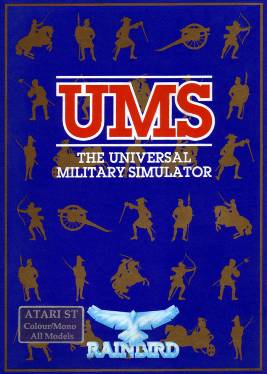
The Universal Military Simulator is a computer game developed by Rainbird Software in 1987 for the Macintosh, Tandy 4000, and IBM PC compatibles. In 1988, both Atari ST, Amiga versions were released. The game was created by Ezra Sidran. The PC and Amiga versions were ported by Ed Isenberg. The game spawned two sequels: UMS II: Nations at War and The War College: Universal Military Simulator 3.
Addictive Games was a UK video game publisher in the 1980s and early 1990s. It is best known for the Football Manager series of games created by company founder Kevin Toms. The company was originally based in Milton Keynes, England, and later relocated to Bournemouth, in southern England.
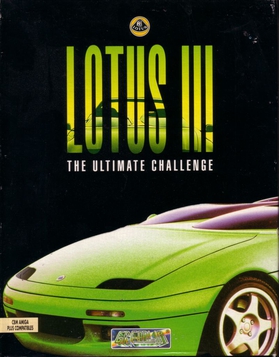
Lotus III: The Ultimate Challenge is the third and final game in the Lotus racing series.

3-D Dinosaur Adventure is an educational video game by Knowledge Adventure released on CD-ROM for MS-DOS compatible operating systems in 1993. Versions for Macintosh and Windows 3.x were published in 1996. A 1997 re-release and an updated version for Macintosh and Microsoft Windows is titled 3-D Dinosaur Adventure: Anniversary Edition.
Jack Nicklaus is a series of golf video games named after golfer Jack Nicklaus. The first game, Jack Nicklaus' Greatest 18 Holes of Major Championship Golf, was developed by Sculptured Software and published by Accolade. It was released for various platforms beginning in 1988. Accolade would publish subsequent games in the series for the next decade, before selling the rights to Activision in 1998. Activision published a sixth game in the series, Jack Nicklaus 6: Golden Bear Challenge, in 1999, but chose not to publish a sequel due to poor sales. The next game in the series, Jack Nicklaus Perfect Golf, was released by a new company in 2016.

Trump Castle is a series of gambling video games published by Capstone Software between 1989 and 1993. The games are named after Trump's Castle hotel-casino in Atlantic City, New Jersey, and were released for Amiga, Atari ST, Commodore 64, Commodore 128, and MS-DOS.

Links: The Challenge of Golf is a golf video game developed by Access Software. It was published for MS-DOS in 1990, followed by the Amiga in 1992. A Sega CD version, developed by Papyrus Design Group, was released in 1994. It is the first game in the Links series, and was followed by Links 386 Pro (1992). A Microsoft Windows version, titled Microsoft Golf, was released in 1992 as the first game in the Microsoft Golf series.
